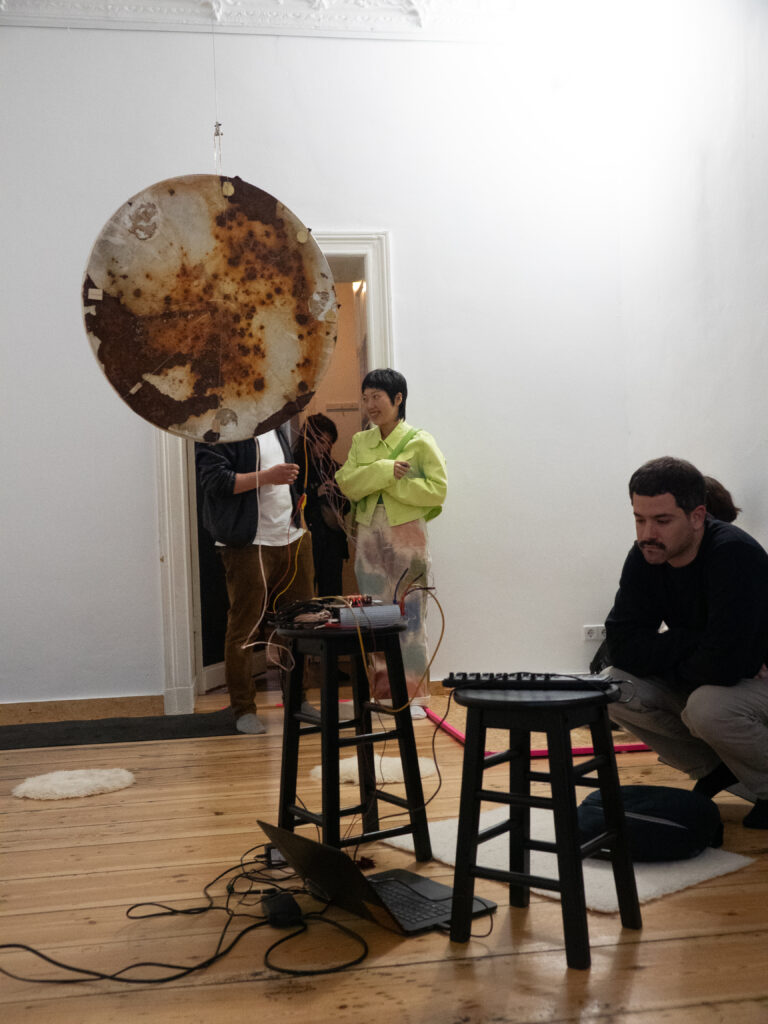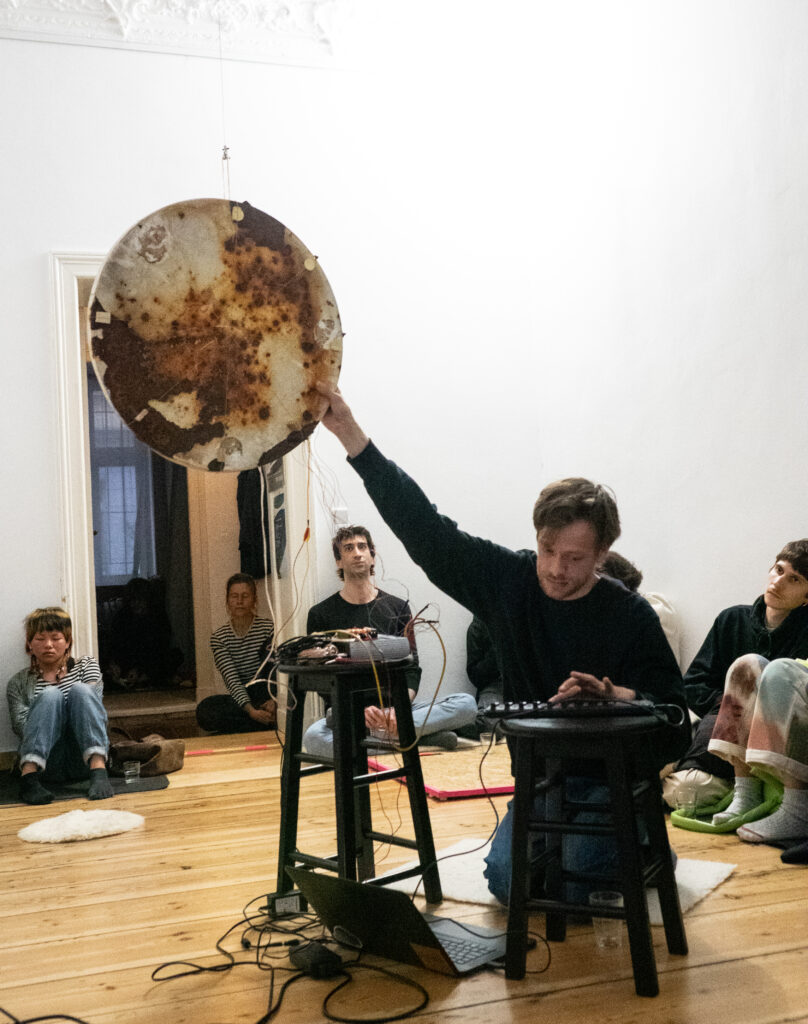Perpetuum Decadentia
Perpetuum Decadentia, which can be translated as eternal decay, is a self-modulating installation, instrument, and performance,
constructed from materials abandoned by our society. A fragile self-regulating system consisting of four brass strings, tensioned over a found metal plate, is tuned to the resonance frequencies of the plate. Each string is equipped with a piezo pickup, which feeds back into a transducer mounted on the back of the object. Between these components, a self-developed code in SuperCollider controls the signals and their interaction.
The work can either run in a self-modulating mode as an installation or be played as an instrument for a live performance. It reflects
the fragility of self-regulating systems and the perpetual cycle of decay and rebirth.
Perpetuum Decadentia explores the paradoxical relationship between preservation and decay. While the system attempts to sustain itself, it is constantly exposed to decay, a process that is further influenced by human intervention and environmental factors. This dynamic between autonomy and fragility is experienced both in the installation and in the performance, where the interaction of the player with the system alters the balance between self-preservation and decay.
The piece invites reflection on the mechanisms of cycles, the relationship between humans and machines, and the aesthetics of decay. It
challenges the perception of stability by showing that even in apparent decay, new order and continuous transformation are at play.

